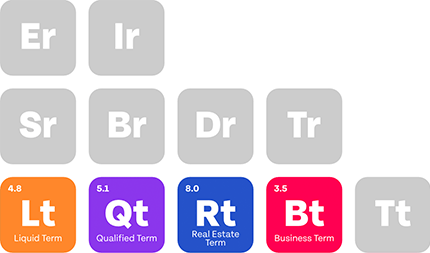Have you ever wondered what the neurosurgeon timeline looks like from high school to full practice? Neurosurgeons are among the most challenging medical training paths, requiring more than ten years of education and residency before they can practice independently. This long journey affects everything from lifetime earnings to career satisfaction.
Key Takeaways
- The typical neurosurgeon timeline starts in high school and lasts an average of 14-17 years through residency.
- The years it takes to complete neurosurgeon training impact lifetime earnings, debt payoff, and wealth growth.
- Physicians and financial advisors should partner with experts who understand the unique career path and financial milestones along the neurosurgeon timeline.
Table of Contents
How Long It Takes to Reach Full Practice
In few other careers does a college graduate expect to spend 14 or 17 years to achieve the pinnacle of success. From premed courses to residency graduation to the day you earn your first paycheck as a practicing physician, every year has a role in your lifetime financial picture.
The neurosurgeon timeline to build a salary is a long one. It is not just about the skills and prestige. It is also about the years of delayed income and the financial tradeoffs inherent in starting your career nearly a decade after most of your college friends.
The longer training required to become a neurosurgeon impacts every financial decision from loan repayment to retirement saving to investment growth. For physicians and advisors alike, understanding the timeline and the implications is critical to achieving financial and personal goals.
Year-by-Year Timeline to Salary and Success
Undergraduate Education (4 Years)
Undergraduate education takes an average of four years. This period of study is where you lay the groundwork for medical school. While a variety of undergraduate degrees are accepted by medical schools, the most common majors among future neurosurgeons are biology, chemistry, neuroscience, and other natural sciences. All of this work is geared towards getting into the best possible medical school while also preparing for the MCAT.
In addition to taking classes, students must accumulate research experience, shadow physicians, and apply themselves towards high GPAs. The undergraduate years are also a major cost consideration for a neurosurgeon.

Medical School (4 Years)
Medical school itself lasts four years on average. The first two years focus on medical sciences like anatomy, pharmacology, pathology, and so on. The last two years are all clinical rotations, including surgery and neurology. Getting experience in surgery subspecialties early on in your career is highly important for aspiring neurosurgeons. Early connections you make during rotations will become crucial allies as you seek to pursue your residency.
Residency in Neurosurgery (7 Years)
The final required phase in the neurosurgeon timeline is called residency. This is the true gauntlet of the neurosurgeon training process and is also the longest portion. Instead of training in a particular subfield of medicine, a neurosurgery resident must become a skilled generalist. This means starting with general surgery rotations to learn basic surgical skills and then proceeding through a broad-based program of neurosurgical technique in the areas of cranial, spinal, and vascular procedures.
Residency is intense, with workweeks often topping 80 hours. In addition to patient care and surgery, neurosurgery residents must manage research, teaching, and frequent exams and evaluations. The burden is significant, but this training is also what makes the neurosurgeon timeline one of the most demanding, and ultimately rewarding, in medicine.
Altogether, the neurosurgeon timeline through residency averages 14 years when combined with undergraduate and medical school education. This makes it one of the longest medical education timelines of any specialty.
Fellowship (Optional: 1-2 Years)
For neurosurgeons who decide to do a fellowship in a sub-specialty after residency, this period of training adds another one or two years. Fellowships are highly sought after by top neurosurgeons and can include:
- Pediatric neurosurgery
- Neuro-oncology
- Complex spine surgery
- Functional neurosurgery
Fellowships offer more advanced and specialized training, which often leads to greater career opportunities, academic appointments, and leadership positions. Of course, they also lengthen the timeline and delay earning full income.
Typical neurosurgeon timeline from college to full practice:
|
STAGE |
DURATION |
CUMULATIVE YEARS |
TYPICAL AGE |
|---|---|---|---|
|
Undergraduate |
4 years |
4 |
22 |
|
Medical School |
4 years |
8 |
26 |
|
Neurosurgery Residency |
7 years |
15 |
33 |
|
Fellowship (optional) |
1-2 years |
16-17 |
34-35 |
The above neurosurgeon timeline summarizes the typical educational and training path, showing how many years it takes to become a fully practicing neurosurgeon.
Neurosurgeon Timeline Compared to Other Medical Specialties
When compared to other specialties, the neurosurgery timeline is among the longest.
- Internal Medicine: Often 3 years of residency after medical school.
- General Surgery: Usually 5 years.
- Orthopedic Surgery: Typically 5 years, sometimes followed by a fellowship.
- Neurosurgery: A minimum of 7 years, sometimes longer if a fellowship is included.
The delayed start to the higher-earning years has a major effect on how much a neurosurgeon can accumulate over their career. Saving for retirement, investing, and paying off student loans all start years after peers in other specialties.
Delayed Earning Years in Neurosurgeon Training
The neurosurgeon timeline delays high earning years compared to other specialties. Physicians in shorter-track specialties start earning a good salary several years earlier than neurosurgeons. The lost time adds up, creating significant differences in retirement savings, wealth accumulation, and how long it takes to pay off debt. For example, a general surgeon may be earning $350,000 at age 31 while a neurosurgeon may not reach that salary until age 36 or later. The difference can be millions of dollars over a lifetime.
Planning for the Long Haul: Neurosurgeon Salary and Finances
The neurosurgeon timeline requires future physicians to spend many years in training with comparatively low pay. This creates significant financial stakes in terms of:
- Student loan debt, which is often over $200,000
- Resident salaries, usually in the $60,000-$80,000 range
- Postponed milestones such as buying a home and starting a family
- The difficulty of saving for retirement much later than most peers
These financial challenges mean it’s critical for neurosurgeons to start financial planning as early as possible. Smart debt management, proper disability coverage, tax strategies, and planning for contract negotiations all protect the lifetime value of a neurosurgeon salary.

Beyond Training: Protecting and Growing a Neurosurgeon Salary
The training phase of the neurosurgeon timeline is only the beginning. Contract negotiation, compensation structure, and malpractice insurance management are all financial decisions that have a profound impact on the bottom line. Working with financial advisors who understand physician careers is the only way to ensure neurosurgeons make informed decisions regarding:
- Income protection and disability coverage
- Tax-smart wealth-building strategies
- Investment and retirement planning for the long term
- Paying down debt on the right schedule
Completing the neurosurgeon timeline represents years of dedication, and with the right planning, those years can translate into long-term financial security and professional fulfillment.
The Road Ahead: Converting Training Years into Value
For many neurosurgeons, the path to a career and salary is the main reason they chose the field in the first place. The number of years and years of training represent not just a salary, but the opportunity to do work that changes lives, impacts medicine, and helps people in their most critical moments. At the same time, the long journey requires just as much planning and focus as the operating room. Building sustainable wealth, managing debt, and protecting income are all essential to making sure the long neurosurgeon timeline pays off for a lifetime.
Physicians Thrive: Helping Neurosurgeons Convert Years into Value
The team at Physicians Thrive helps physicians make the most of their training timeline, turning all of those years of schooling into financial success and freedom. We help doctors protect their income, grow their wealth, negotiate their contracts, and so much more.
Whether you’re just beginning or nearing the end of your neurosurgeon timeline, understanding how each stage connects to your financial future is key to long-term success.
Contact us today so that the years you’ve already invested in your career can continue to pay off for a lifetime.
Keep reading: How Much Does a Neurosurgeon Make Based on Experience: A Comprehensive Breakdown








































